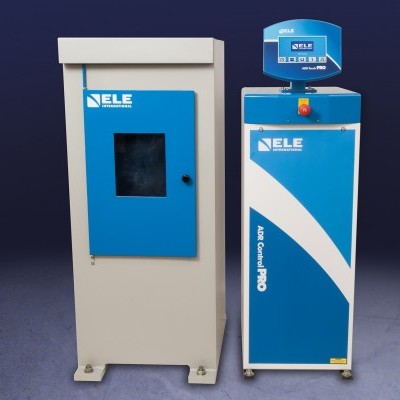

the carbon dioxide concentration within the chamber can fall rapidly, and therefore, for practical reasons, a short period of low carbon dioxide concentration is acceptable. NOTE 4 When the door of the storage chamber is opened. NOTE 3 Relative humidity levels can be maintained using methods at the discretion of the laboratory, for example active humidification/dehumidification. Therefore, it is important that the storage chamber has active control on carbon dioxide concentration, relative humidity and temperature. Also, without active control of the carbon dioxide concentration, the levels can drop below the permitted tolerance as the carbonation process continues. NOTE 2 Experience (5] has shown that if saturated surface-dry specimens are placed in the storage chamber shortly after removal from water curing, the relative humidity can exceed that permitted. The carbon dioxide concentration shall be within ± 0,5 %īy volume of the target value with no variation for longer than 4 Ii outside the target value ± 1,0 %. (informative) for details of a suitable chamber. NOTE I Suppliers of some indicator solutions also provide a fixing solution that permanently fixes the colour change.Ī magnifier and a gauge with a precision of 0,5 mm.Ī storage chamber with a carbon dioxide concentration within the storage chamber in percent by volumeĪs indicated in Clause 4, temperature at (20 ± 2) ☌ and a relative humidity at (57 ± 3) %, see Annex A Where needed, a fixing solution to permanently fix the colour change in the concrete specimen, see Clause 7. Phenolphthalein powder should be handled with the greatest care using safety gloves in a fume cupboard fitted with an extractor. WARNING - Phenolphthalein is listed In REACH appendix 2 and Its lists of substances of very high concern.

BS EN 12390 1 PDF
Further, the ultimate experimental bond stress of OPKSC was found nearly 2 times higher than the theoretical values calculated based on BS standards.BS EN 120 pdf free download.Testing hardened concrete Part 12: Determination of the carbonation resistance of concrete – Accelerated carbonation method.Ī solution of 0,8 g of phenolphthalein powder dissolved in a solution of 70 ml ethanol and 30 ml of deionised water or a suitable alternative indicator giving a colour change in the range pH 8 to 11 that gives a sufficiently clear colour change in concrete to differentiate the neutralized zone, e.g. The bond stress of the OPKSC was found about 86% of the corresponding NWC however, there was no slip failure between OPKSC and the reinforcement. The addition of silica fume enhanced the compressive strength and thus OPKSC produced 28-day compressive strength up to 37 MPa. The OPKSC produced a density reduction of about 20% compared to NWC. In addition, mineral admixtures, 10% of silica fume and 5% fly ash have been used. Oil palm kernel shell (OPKS), an industrial waste has been used as lightweight aggregates (LWA) in the OPKSC.

The comparison of the fresh, mechanical and bond properties of grade 30 lightweight concrete, namely oil palm kernel shell concrete (OPKSC) with normal weight concrete (NWC) of similar strength is presented in this paper.


 0 kommentar(er)
0 kommentar(er)
